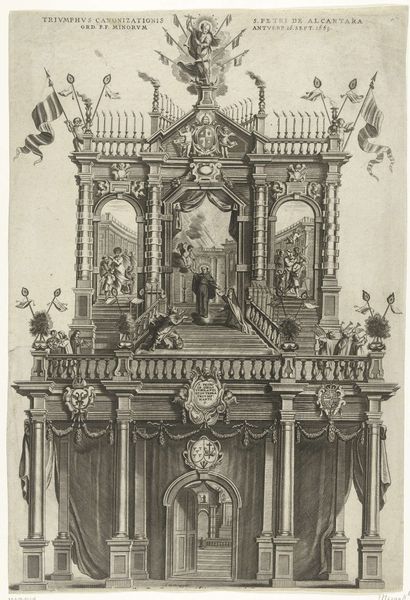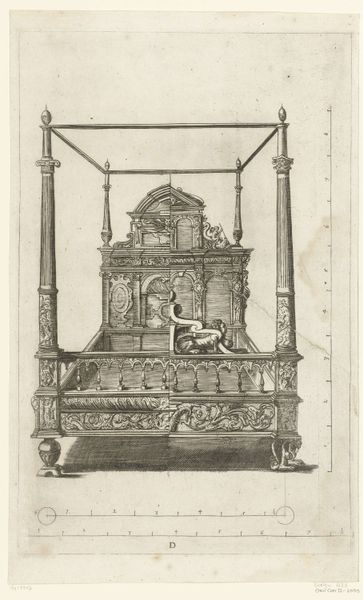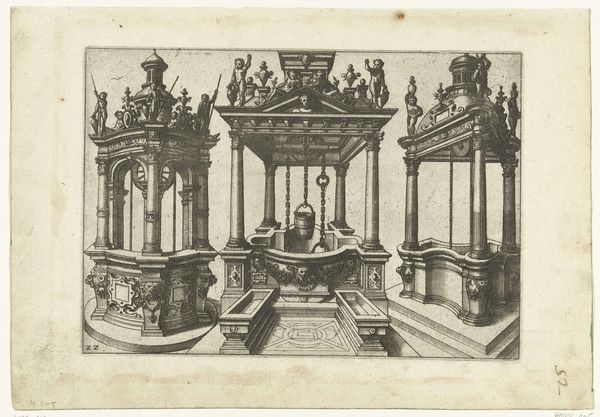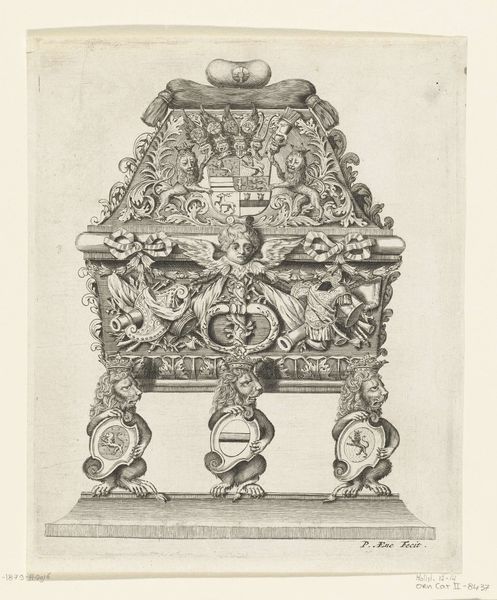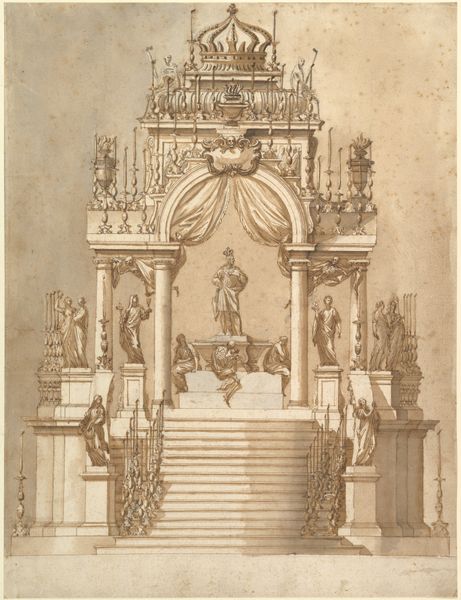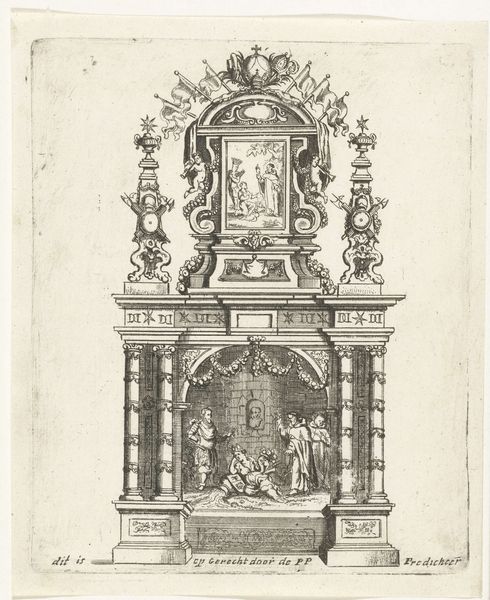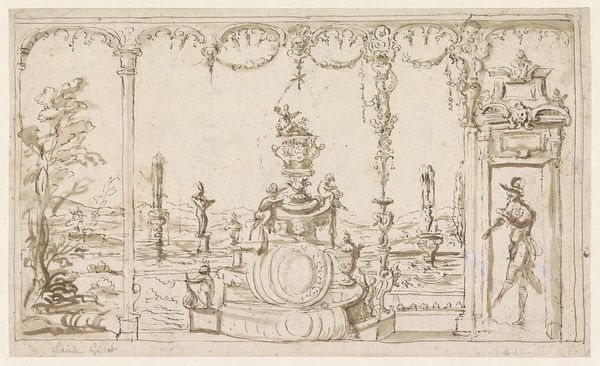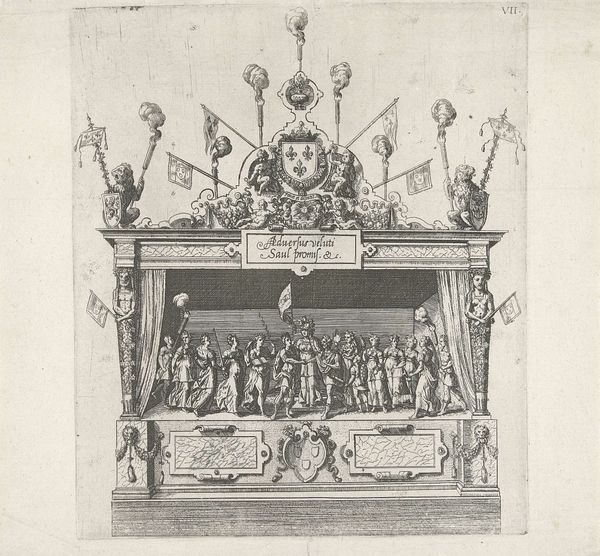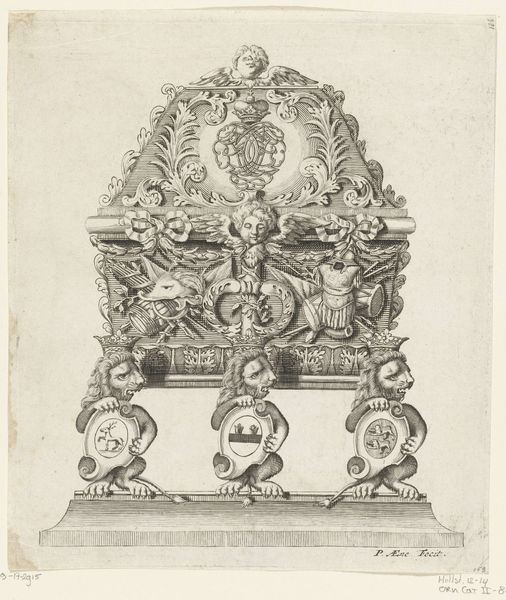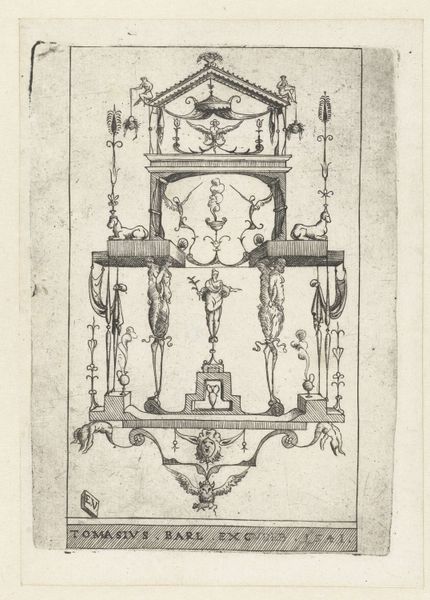
Stellage voor het vuurwerk bij de viering van de Vrede van Utrecht, 1713 1713
0:00
0:00
drawing, ink, architecture
#
drawing
#
baroque
#
ink
#
geometric
#
cityscape
#
history-painting
#
architecture
Dimensions: height 342 mm, width 454 mm
Copyright: Rijks Museum: Open Domain
Bernard Picart created this drawing of the stand for fireworks celebrating the Peace of Utrecht in 1713. Look closely at the triumphal structure: you will observe that the lion is a dominant symbol, holding a flag. The lion, historically associated with courage and power, embodies the strength and pride of a nation. This is not new; we can trace its prominence back to ancient heraldry. In the ancient Near East, the lion was a symbol of royal power, often depicted in monumental sculptures guarding palaces. Think of the Ishtar Gate of Babylon. The lion's presence speaks to a deep-seated need to assert dominance, a motif repeated across cultures. Even in contemporary contexts, the lion remains a powerful symbol, evoking feelings of authority and national identity, like a collective memory, triggering associations with historical power structures and primal instincts related to protection and territoriality. The symbol’s ability to reappear, loaded with new layers of meaning, speaks to a cyclical pattern of cultural memory.
Comments
No comments
Be the first to comment and join the conversation on the ultimate creative platform.
